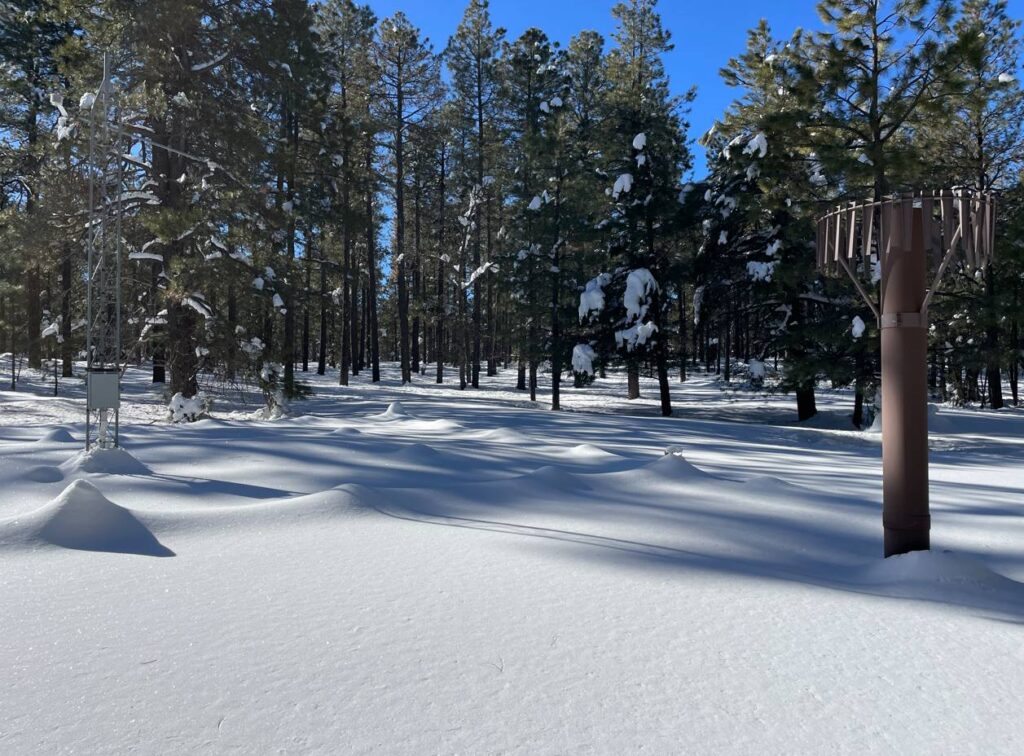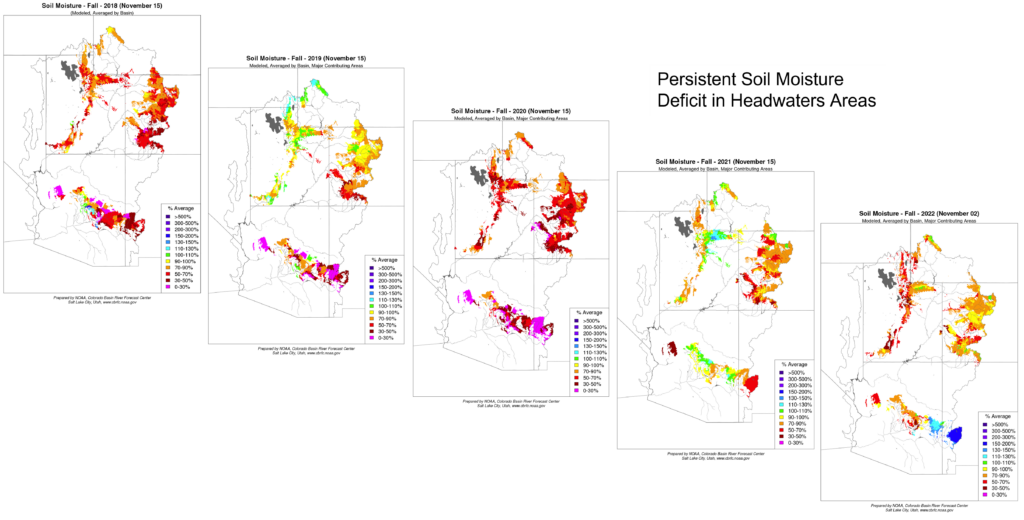Did you know that Arizona residents and businesses receive the majority of their water from surface supplies like rivers? While this winter’s snowfall has benefited watersheds positively, the result of Arizona’s winter snowpack affects each watershed system differently. This blog contains great information from SRP and CAP on the current snowpack conditions, and its potential impact on our state’s water supply.
Salt River Project Watershed (SRP)
Winter 2023 – Snow, packed with optimism
All expectations this winter, the 3rd La Niña year in a row, were for below-normal precipitation for much of the west including southern California and all of Arizona. However, the weather gods have had other plans. First, California has suffered the onslaught of multiple atmospheric rivers, record stream flow in numerous rivers, flooding, and tragically, loss of life! Even so, precious little storm activity was making its way into the desert southwest states. All eyes remained focused on the increasingly severe water crisis on the Colorado River storage system. However, slowly at first, Arizona’s weather fortune began to change for the better.
A couple of storms in December delivered essentially normal precipitation across the Salt and Verde watersheds. Then, in January, Mother Nature delivered a true bounty of rain and snow all across Arizona. By the end of the month, the winter precipitation total for the watershed stood at 7.05” or 189% of normal since December 1. The precipitation was so bountiful that the water storage system of Central Arizona rebounded considerably in January as the dramatic turn to wet weather graced the state.

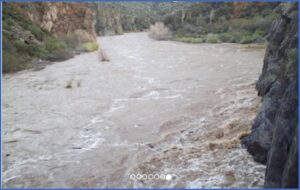
SRP reservoir storage has increased from 65% at the start of the new year to 78% on February 1. That increase in storage was driven by total January inflow in excess of 300,000 acre-feet. (An acre-foot is 325,851 gallons!) Last year, one of the many drought years we’ve been experiencing, produced just 217,000 acre-feet throughout the entire period from January 1 through May 31!
The storms of January left a bountiful snowpack as well. On the Verde watershed, the snowpack on February 1 is roughly 300% of normal, and twice the usual peak accumulation for the entire winter season! On the Salt watershed, the snowpack stands at 111% of normal and about 95% of the typical winter peak.
From the snowpack comes the most reliable runoff into the reservoirs! SRP is forecasting Roosevelt Lake to nearly reach capacity this late spring at around the mid-90s percent full. On the Verde watershed, where the snowpack is so abundant, the forecast predicts Horseshoe and Bartlett reservoirs filling to capacity and requiring a spill of up to 100,000 acre-feet.

The projected surplus of water from the Verde reservoirs reinforces SRP’s desire and goal to increase the storage capacity on the Verde River by raising Bartlett Dam. SRP and many partners are currently working with the Bureau of Reclamation on a feasibility study to do just that. Additional water supplies developed will be used by our partners to meet demands outside of SRP’s service area.
SRP does not meet all the water needs of the Valley. The reality is the shortage on the Colorado River will still be felt in the Valley despite the great news of the SRP system nearly refilling this season. The Bartlett project will be essential to bringing new renewable supplies of water to central Arizona to help to alleviate the hardships of the shortages on the Colorado. We are committed to continuing working with all our local and federal partners to identify ways to strategically manage the regional water supplies for the benefit of all.
Another effort we are pursuing is the ability to store water in the Roosevelt Flood Control Space for a longer period than is legally possible now so that the water can be beneficially used. Moving these waters around is paramount to maximizing benefits. That’s why we are also developing plans to fully integrate the Salt River Project system with the Central Arizona Project system to allow water to flow not only into the SRP canal system from the CAP, but for water developed within the SRP reservoir system to be pumped into the CAP canal system to be delivered elsewhere.
Finally, we’re all in this together. It’s likely the drought isn’t over despite Arizona’s wonderful wet winter. You can do your part by always being careful when using water. We have enough to use, but not enough to waste. Water—Use It Wisely. Learn more about SRP water management at Protecting our water supply (srpnet.com)
Charlie Ester is the manager of the Watershed Management division at SRP. He studied Hydrology at the University of Arizona and has worked at SRP for nearly 40 years. His group’s responsibilities include hydrometeorological watershed monitoring, runoff forecasting, snow survey, drought planning, flood management, and reservoir operations planning. Charlie can be reached at Charlie.esteriii@srpnet.com. Learn more about SRP water management at Protecting our water supply (srpnet.com). SRP is one of 19 Water – Use It Wisely partners to offer water-saving advice and assistance programs.
Colorado River Basin (CAP)
Promising start, results remain to be seen
The Colorado River Basin had a very promising start to 2023 with respect to precipitation. Below, monthly precipitation is compared across the basin from January 2022 and January 2023, with the contrasting colors quite striking (Note: Purples and blues are good!)
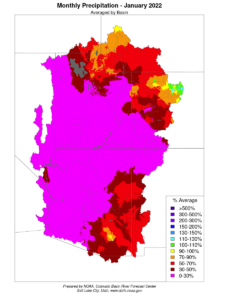
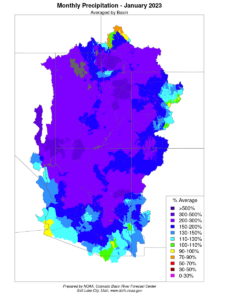
In addition, the snow water equivalent (SWE) as measured above Lake Powell is tracking well above average. As it sounds, snow water equivalent means how snow “equates” to water, which hopefully ends up in our reservoirs. The graph below shows the last five years of SWE, including the lower snowpack years in 2021 and 2022. We hope the 2023 line can track 2019 conditions.
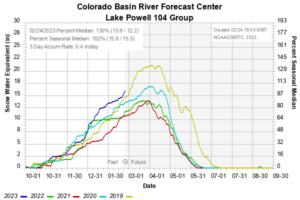
We refer to the Colorado River Basin as being snowmelt-hydrology dominant – water in the reservoirs is dependent upon the amount of snow that melts and ends up in our reservoirs. The timing and magnitude of the spring runoff is ultimately a result of the SWE conditions, spring weather (whether the temperatures are warmer or cooler) and the amount of moisture in the soil.
When it comes to soil moisture, that has been the wild card lately due to a concept called aridification. The Colorado River Basin Forecast Center models the fall soil moisture conditions to try to understand how soil moisture might affect the spring runoff. That’s where the uncertainty comes in, even with stellar snowpack.
The table below shows the past five years of soil moisture conditions. Unfortunately, similar to the last several years, conditions across the Basin are near to below normal in many of the major runoff-producing areas. So, while snowpack has been near average, the runoff hasn’t matched accordingly.
We’re grateful for the wet January, but are hoping the trend continues and that we see better runoff this spring – but time will tell!
Nolie Templeton, Ph.D., P.E., is a planning analyst in Central Arizona Project’s Colorado River Programs Department. She serves as CAP’s liaison with the Water Utility Climate Alliance (WUCA) and the North American Weather Modification Council (NAWMC). Nolie earned a B.S. in Environmental Engineering from the University of California, San Diego, and a M.S. and Ph.D. in Civil, Environmental and Sustainable Engineering from Arizona State University. She can be reached at ntempleton@cap-az.com. Learn more about Central Arizona Project at KnowYourWaterNews.com. CAP is one of 19 Water – Use It Wisely partners to offer water-saving advice and assistance programs.


